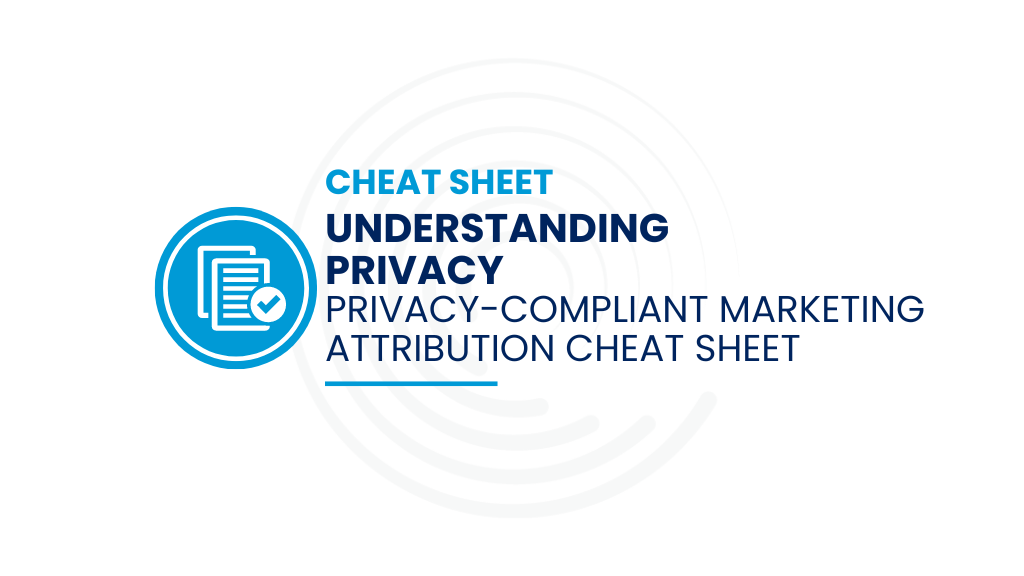B2B marketers need to know how campaigns are performing in real-time or at close to real-time. If you’re dealing with budgetary constraints (and who isn’t?), you have to make strategic decisions based on accurate data or you’ll lose efficiency, and you probably won’t get the results you need. Everyone knows this, but marketers still struggle with how to measure campaign performance in terms of a closed business. Marketing attribution models help marketers identify which campaigns influence sales and contribute to revenue so marketers can:
- Adjust on the fly to improve performance
- “Defend the spend,” i.e., justify campaign budgets
- Allocate spending to the right marketing mix
Ultimately, accurate marketing attribution lets marketers drive revenue growth through greater efficiency via marketing optimization. To reach that goal, you need to be able to determine the revenue impact of your programs, and you need to be able to do that inside the CRM so that your numbers have credibility outside of the marketing department and to the CEO.
How to Choose the Right Marketing Attribution Model
There are two broad categories of attribution models, single-touch models, and multi-touch models, and several models fall under each category. You can download our handy cheat sheet here for more details, but generally speaking, each category has several model types that are used to answer different business questions, and there are pros and cons for each.
Single-touch models can be helpful for gaining insight when you’re analyzing initial engagement. We recommend single-touch analysis because it can be extremely useful for marketers to understand how they engaged people at the beginning, middle, and end of a campaign. That said, it’s important to understand the limitations of single-touch analyses. When using one of the three types of models in the category — first touch, last touch, or tipping point — all of the credit goes to a single touch, so an influential touch that is outside the designated parameter doesn’t get credit.
Multi-touch attribution analyses like the even-spread model (dollar amount distributed evenly across touches, e.g., a $100K campaign with 10 touches would credit each with $10K) can reveal campaigns that maximize engagement and are helpful for establishing a baseline. Several other model types also fall under this category, and each can shed light on important aspects of a campaign.
The bottom line is that choosing the right attribution model will depend on your marketing strategy and objectives as well as what key questions you need to answer. If you’re unsure, the cheat sheet can provide guidance on specific scenarios.
Customizing Marketing Attribution Models and Avoiding a Rookie Mistake
If you use Full Circle marketing attribution software, you can customize models to apply weight via the Campaign and Campaign Member fields in your CRM, examining factors like campaign type, job functions, the amount of time spent in the campaign, and offline actions like qualified booth visits vs. conference attendance, etc. This can help you assess campaigns against your marketing strategy. For example, if you’re targeting a financial services business, you’d add weight to responses from financial services companies. If your objective is lead generation, you’d weigh the first touch so you can see how well your target audience is responding at the top of the funnel. Later in the sales cycle, you could add weight to subsequent touches to track impact at different funnel stages.
Tips to Avoid Making a Rookie Mistake
Tip #1
Weighting by campaign type isn’t a good idea because, for companies, an email will always win, and that’s not an accurate view of marketing performance. To compare performance across campaign types, use an even-spread model for all campaigns, group by campaign type, and then analyze performance. This will give you a visual that provides useful insight.
Tip #2
Be cautious of including sales touches in your marketing attribution models. If your company is using a tool like Outreach, Salesloft, or Yesware, these sales automation tools will write all the emails going back and forth with the prospects. These emails can swamp the number of marketing touches so the sales campaigns will always appear the most influential.
Tip #3
Run multiple models at the same time and compare results. You may learn something significant about your entire marketing campaign and marketing tactic portfolio by comparing results across multiple models.
Full Circle Marketing Attribution customers have told us the ability to accurately attribute revenue to campaign touches has been a gamechanger for their B2B marketing operations. They can get an accurate read on which campaigns influence customers at every phase of the journey, proving to them which campaigns and channels work best, from the top of the funnel to the bottom. That’s the power of a winning attribution model.
[Ebook] Best Practices for Designing a Lead Life Cycle in Salesforce
Download this guide to get our recommendations on how to track funnel metrics using lead and contact statuses, stages, and campaign responses in Salesforce.




